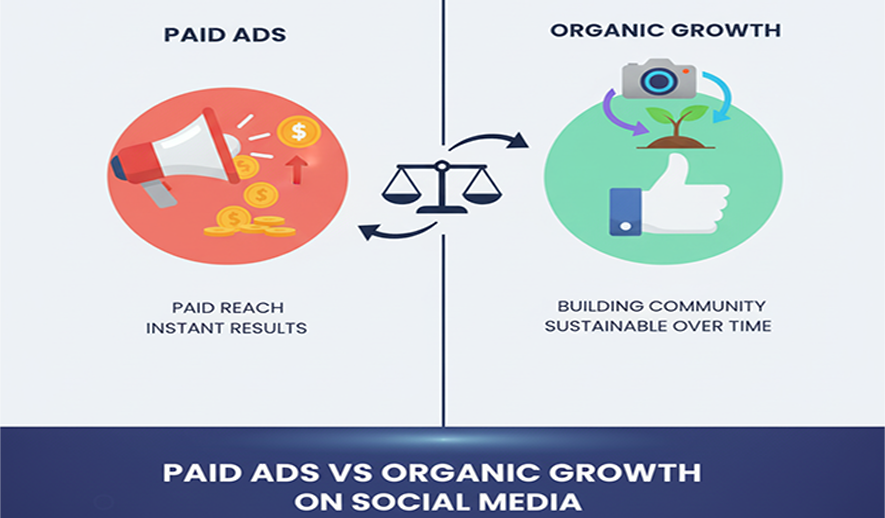
Paid Ads vs Organic Growth on Social Media?
There is no "vs." when it comes to paid ads and organic growth on social media in 2025—the two are now seen as complementary parts of a complete strategy. Organic growth builds a foundation of trust and community over time, while paid advertising provides immediate reach and targeted results. The most successful brands use a hybrid approach that leverages the strengths of each method.
Paid ads: For speed and scale
Paid ads on platforms like Meta (Facebook and Instagram), TikTok, and LinkedIn allow you to reach a highly specific audience instantly.
-
Pros:
- Quick results: Launch campaigns to drive traffic, leads, or sales within a short timeframe, ideal for promotions or product launches.
- Targeted reach: Use advanced targeting options based on demographics, interests, and behaviors to put your content directly in front of potential customers.
- Measurable ROI: Platforms provide robust analytics to track impressions, clicks, and conversions, making it easy to measure and optimize for return on investment (ROI).
- Scalability: You can easily increase your reach by increasing your budget, making it simple to scale successful campaigns.
- Cons:
- Requires a budget: Results stop when you stop paying. This can be challenging for small businesses with limited funds.
- Ad fatigue: Audiences can become bored with seeing the same creative repeatedly, which requires constantly refreshing your ad content.
- Less authentic: Users know they are seeing a sponsored post, which can sometimes feel less genuine than organic content.
Organic growth: For trust and community
Organic growth focuses on building a natural following over time by creating valuable content, engaging with your community, and encouraging shares.
-
Pros:
- Builds authenticity and trust: Organic posts feel more genuine and help build deeper, longer-lasting relationships with your audience.
- Cost-effective: While it requires a significant investment of time, the monetary cost is low, making it a good option for businesses with limited budgets.
- Long-term value: High-quality evergreen content can continue to drive traffic and engagement long after it's first posted, creating a compounding effect.
- Drives community: It's how you build a loyal and engaged community of brand advocates through meaningful interactions and user-generated content (UGC).
- Cons:
- Slow results: Building a large organic following takes time and consistent effort. It's not suited for immediate sales goals.
- Limited and unpredictable reach: Algorithm changes frequently reduce the organic reach of posts, meaning not all of your followers will see your content.
- Time-intensive: Requires a significant amount of time and effort for content creation, community management, and staying on top of trends.
